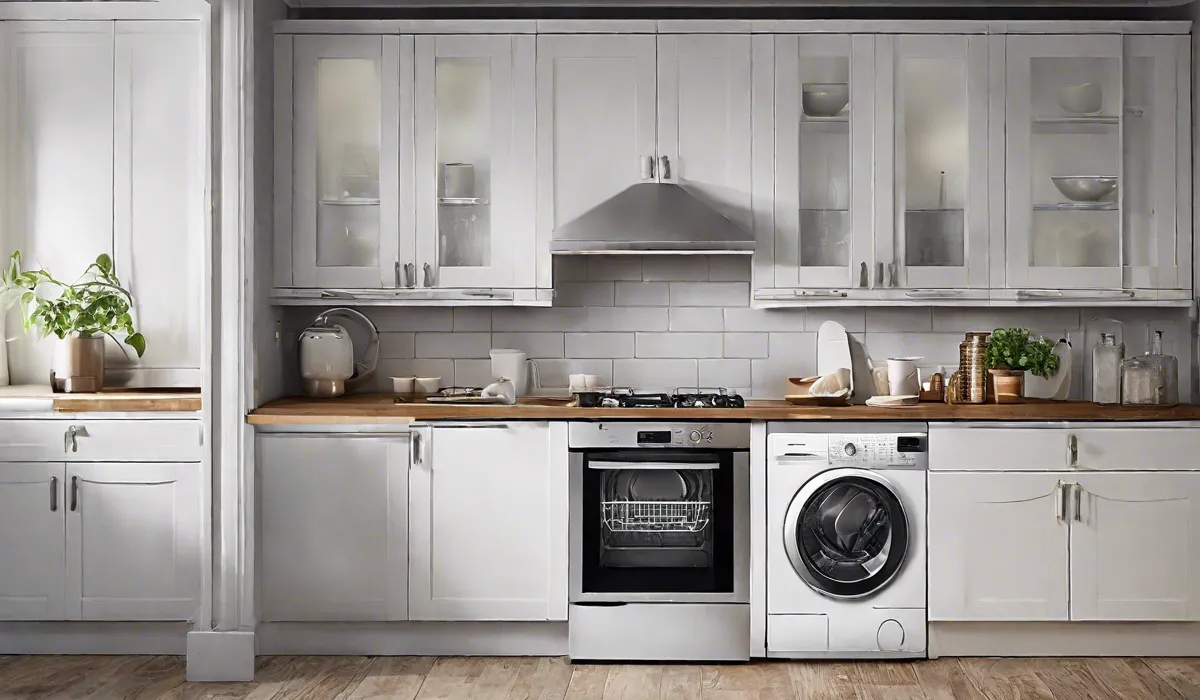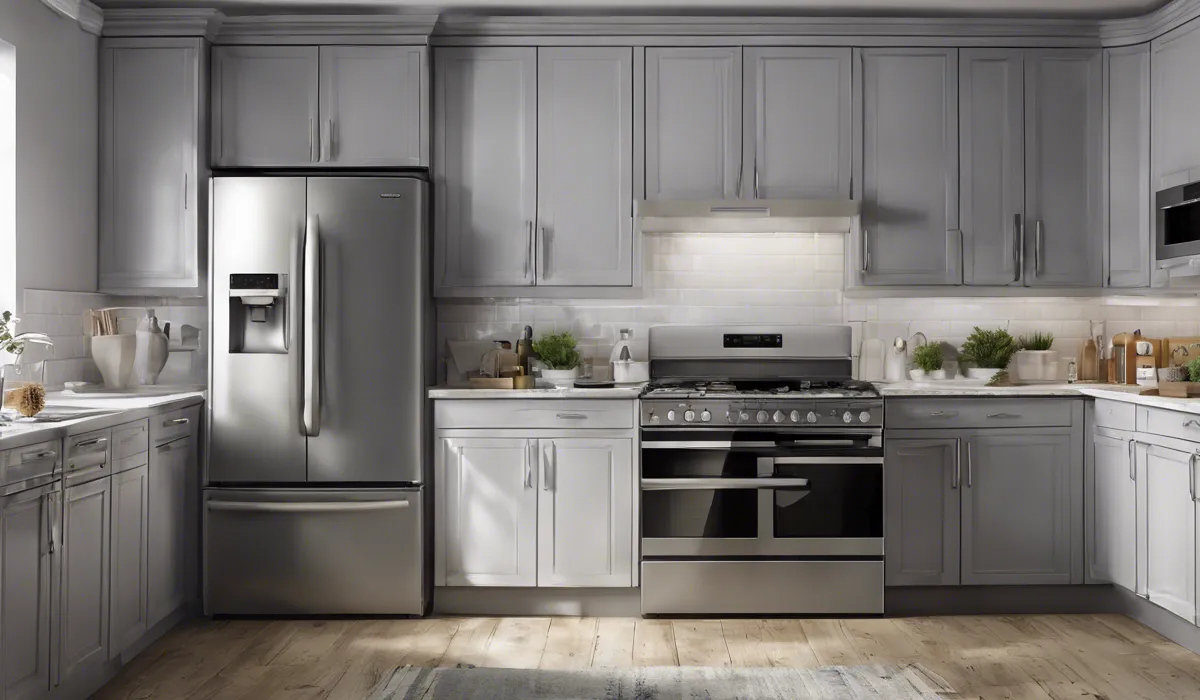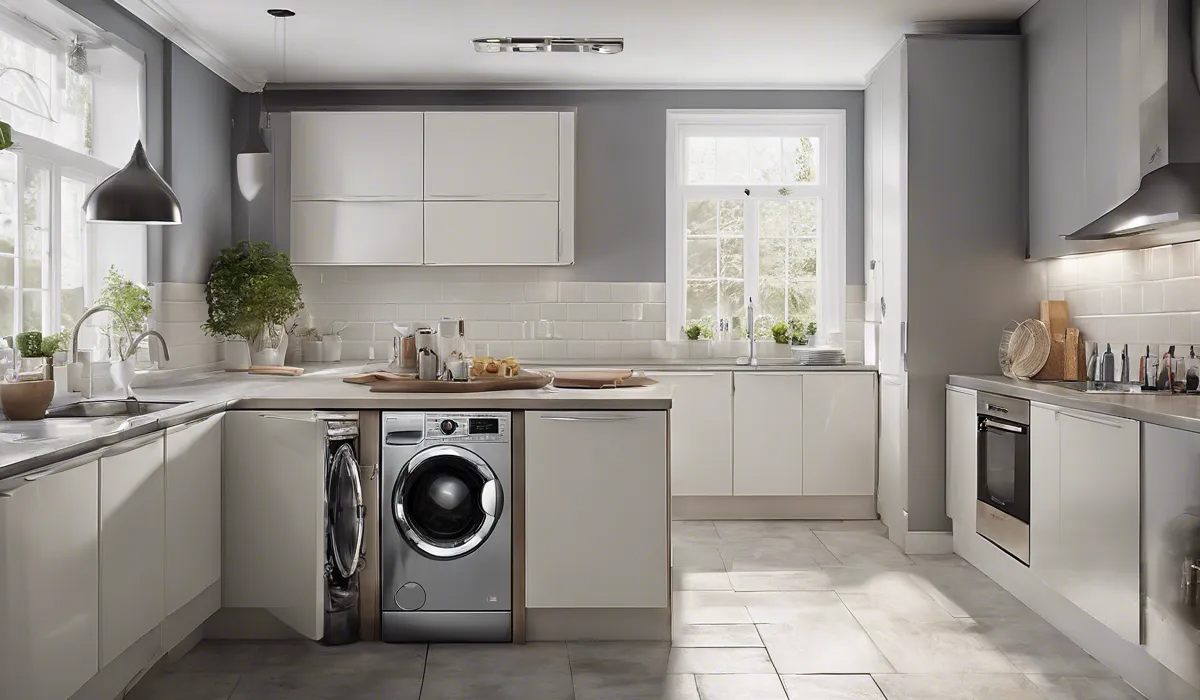Can You Replace a Dishwasher with a Washing Machine? Find Out How!
No, you cannot directly replace a dishwasher with a washing machine due to differences in plumbing, electrical requirements, and design. Dishwashers and washing machines are intended for distinct tasks and spaces. Professional modification of the space and connections is necessary for such a replacement.
Assessing Compatibility and Requirements

Understanding the Differences Between a Dishwasher and a Washing Machine
When considering replacing a dishwasher with a washing machine, it is important to recognize that these appliances serve different purposes and have unique designs.
A dishwasher is built to clean dishes with sprayers and typically uses less water per cycle than a washing machine, which cleans clothes through agitation and requires more water.
This fundamental difference impacts installation requirements and the overall feasibility of such a swap.
Space and Dimension Considerations
Measuring the space is the first step in assessing whether a washing machine can fit where a dishwasher previously was.
Washing machines are generally larger and may not fit into the standard cabinet space of a dishwasher.
To understand what size washing machine will fit into the space, you can refer to guides such as ceiling box dimensions, which can offer insight into standard size allocations for household appliances.
Plumbing and Electrical Requirements
Plumbing and electrical infrastructures differ between dishwashers and washing machines.
A dishwasher usually requires a hot water connection, while a washing machine needs both hot and cold water inlets.
Moreover, the electrical requirements for a washing machine may be more demanding than for a dishwasher, potentially necessitating an upgrade to existing circuits.
Ventilation and Drainage Compatibility
Ventilation is crucial for a washing machine to prevent moisture build-up and mildew.
Drainage systems also differ; a dishwasher typically drains into a garbage disposal or sink drain, while a washing machine requires a dedicated standpipe for drainage, which may involve significant plumbing adjustments.
Load Capacity and Usage Differences
The load capacity for dishwashers and washing machines varies greatly, affecting usage and operational costs. Washing machines typically handle a larger load and use more water and energy per cycle, impacting utility bills and the environment.
Installation Process

Removing the Old Dishwasher
Removing a dishwasher involves disconnecting water supply lines, drainage, and power. Care must be taken to shut off the appropriate valves and circuit breakers to ensure safety during removal.
Preparing the Space for a Washing Machine
Once the dishwasher is out, the next step is prepping the space for the washing machine. This may include altering cabinetry and ensuring the flooring can support the weight and vibrations of a washing machine.
Adjusting Plumbing for Water Supply and Waste
Adjusting the plumbing is a critical task that might require professional help. The existing plumbing will likely need to be reconfigured to accommodate the washing machine’s water supply needs, particularly for cold water and waste drainage.
Electrical Modifications for Power Compatibility
Electrical modifications may be necessary to meet the washing machine’s power requirements.
This could involve installing a new circuit or updating the current one to handle a higher amperage, ensuring it aligns with toilet flange electrical standards for household appliances.
Ensuring Proper Leveling and Stability
Proper leveling is essential for a washing machine’s operation to prevent excessive vibration and noise. The floor must be level and stable enough to support the appliance during high-spin cycles.
Final Checks and Testing After Installation
After installation, it is crucial to conduct a thorough inspection and test all connections for leaks. Running an initial wash cycle will also help in confirming that the installation has been completed successfully.
Potential Challenges and Solutions

Addressing the Gap in Cabinetry or Countertops
If there is a gap after removing a dishwasher and installing a washing machine, it may need to be filled with custom cabinetry or countertop material. Aesthetic considerations should be made to ensure the new appliance blends seamlessly with the kitchen design.
Managing the Difference in Water Usage and Efficiency
Washing machines typically consume more water than dishwashers. To manage this difference, it’s advisable to choose a high-efficiency washing machine to minimize water usage and the impact on utility bills.
Handling Increased Vibrations and Noise
Increased vibrations and noise can be mitigated by installing anti-vibration pads and ensuring that the washing machine is perfectly level. Insulation materials can also be used around the appliance to reduce noise transfer.
Adapting to Different Cycle Times and Functionalities
A washing machine’s cycle times are different from a dishwasher’s, and they often offer a wider range of functionalities. Users may need to adapt to these differences in operation and cycle duration.
Solutions for Integrating into Kitchen Design Aesthetically
To aesthetically integrate a washing machine into your kitchen, consider color matching, panel-ready designs, or placing it behind a decorative curtain. Accessorizing with matching hardware can also help maintain a cohesive look.
FAQs About Replacing a Dishwasher with a Washing Machine
Can I install a washing machine where a dishwasher used to be?
Not directly, as a washing machine has different plumbing, electrical requirements, and design specifications compared to a dishwasher.
Do dishwashers and washing machines have the same connections?
No, they usually have different water supply and drainage connections, as well as varying electrical needs.
What modifications are needed to replace a dishwasher with a washing machine?
Professional modification of the plumbing, electrical supply, and space is necessary to accommodate a washing machine where a dishwasher once was.
Is it safe to replace a dishwasher with a washing machine without professional help?
No, due to the technical differences, it is recommended to seek professional assistance for safety and compliance with building codes.
Will the existing dishwasher space be sufficient for a washing machine?
Not necessarily, as washing machines typically require more space and may have different dimensions compared to dishwashers.
Final Thoughts
Directly substituting a dishwasher with a washing machine is impractical due to divergent plumbing and electrical needs, alongside their distinct design and functions.
For a successful conversion, expert alterations to the existing infrastructure and connections are indispensable to accommodate the specific requirements of a washing machine.




